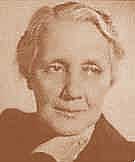A. The Controversial Discussions of the concept of Phantasy by the British Psychoanalytical Society in the 1940s.
1. Freud’s essays on Phantasy
a. “Formulations on the two principles of mental functioning” (1911)
b. The lecture 23 of the Introductory Lectures in Psycho-Analysis (1916)
c. “Hysterical Phantasies and Their Relation to Bisexuality”
d. Interpretation of Dreams
(1). Phantasy, a wish-fulfilling activity, derives from unconscious impulses (sex and aggression)
(2). The topographical model of the mind: the system unconscious, the system preconscious, and the system conscious
(3). The primary and secondary process (the logical thinking)
(4). The primal phatasies
2. Klein’s mode of Phantasy (from 1919 onwards)
a. The damaging effect of inhibition of Phantasy in the development of the child
(1). The case of Peter—the threat of the coming brother
b. The ubiquity of phantasies about the mother’s body and its contents
(1). Pre-Oedipal phase: Oedipus complex does not start with the genital phase (age 3 onwards) but earlier; and that the super-ego is not the outcome of the Oedipus complex but precedes it.
(2). An empty space—an internal emptiness—girls’ phantasies about he space inside—where babies exist
c. The variety of phantasies about the primal a scene and the Oedipus complex
(1). The primal scene of the “Combined parent figure”: a crisis for the very young child—the depressive positive
(2). The confluence of love and hatred results in a devastating internal state for the child
d. The intensity of both aggressive and loving phantasies
(1). Part-Objects: “splitting of the object”=The primitive states tend to deconstruct objects into “good” and “bad” bits
(2). Narcissism results from the interchange—in phantasy—with an object, so that good qualities of all kinds reside within the self, and all bad in the object.
(3). Fetishism
(4). Klein’s view of healthy development: the mixture of the good and bad
e. The Depressive Position (1935)
(1). The position in relation to an object—a position has characteristic anxieties, defenses and phatnasies
(2). Death instinct (the fear of one’s own integrity): The fear of damage to, or death of, the internal loved object
(3). As Abraham remarked: “We have here a confirmation of the theory that at the deepest levels the loss of an object is an anal process and its introjection an oral one.”—the form of excrement
(4). The internal objects (organs) have this quality of otherness—the alien case of “unconsiocus Phantasy” are often very violent and aggressive, different from the ordinary “fantasies.”
3. Their differences:
B. Recent changes in the Kleinian use of Phantasy
1. More emphasis on the role of Phantasy in the development of logical thought (Hanna Segal)
2. Using part-object anatomical language to describe unconscious phantasies to the patient.
3. Enactment of an unconscious Phantasy (Betty Joseph 1989)
C. Brief conjunction about Phantasy in other schools of psychoanalysis
1. Phantasy in French psychoanalysis
a. The primal phantasies of the primal scene, seduction, castration
b. The Oedipus complex
2. Phantasy in American psychoanalysis
a. Decreasing focus on unconscious Phantasy
(1). Focus on the structural model of id/ego/superego and the defenses of the ego
(2). On interpersonal focus
III: ReferenceHinshelwood, Robert. Introducing Melaine Klein. Cambridge: 1999, Icon Books.
Klein Melanie. Love, Guilt and Reparation and Other Works 1921-1945. London: Vintage, 1998.
Klein Melanie. The Psycho-Analysis of Children. London: Vintage, 1998.
Sayers, Janet. Mothers of Psychoanalysis: Helene Deutsch, Karen Horney, Anna Freud, Melaine Klein. New York: Penguin, 1991.
(2) The mother's body
(1) The paranoid-schizoid position and the depressive position
b. Kleinian mode of phantasy
(2). das Ding
(1). Tripartite of human psyche: id, ego, and superego
a. Freudian mode of phantasy


 字體:小 中 大
字體:小 中 大










